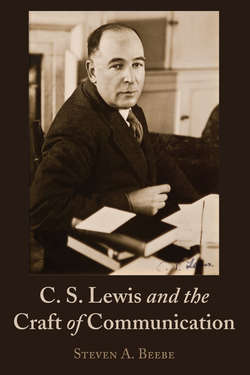Читать книгу C. S. Lewis and the Craft of Communication - Steven Beebe - Страница 25
На сайте Литреса книга снята с продажи.
Effective Communicators Are Audience Centered
ОглавлениеFinally, Lewis was focused on his audience. To be audience centered is to know that ultimately it is the reader or listener who will make sense out of any message that is crafted. People who heard Lewis on the radio when he was delivering his ←24 | 25→Broadcast Talks attended to his message because he had a gift for making a direct connection with the listener. Readers find, too, a personal quality in his ability to connect to the reader. His journey from being raised a Christian, to becoming an atheist during his adolescence and young adulthood, and then returning to belief in God and ultimately a strong Christian belief in his 30s, gave him insight into the skeptical audience he was often trying to reach. Chad Walsh, one of the first scholars to study Lewis and his work aptly subtitled his book about Lewis Apostle to the Skeptics. Walsh knew that Lewis’s message was designed to reach those who may have doubt and uncertainties, who may need their faith bolstered. That audience remains wide and vast, as do Lewis readers.
Mere Christianity was and remains popular because of Lewis’s ability to keep his audience (his reader, or in the case of his broadcast talks, his listener) in his mind’s eye. How does Lewis develop an author-listener relationship? He offers this pithy communication advice in his essay “Christian Apologetics” when he proclaims, “We must learn the language of our audience.”134 As noted earlier, Lewis was not attempting to write the final word about Christianity but to provide an open invitation, especially for those who already believed in Christianity, to explore their beliefs more deeply. After delivering one of his early Broadcast Talks, he wrote to a friend with this assessment of his audience: “I assumed last night that I was talking to those who already believed. If I’d been speaking to those who didn’t, of course everything I’d said would have been different.”135
As you read the writing of C. S. Lewis, HI TEA (Holistic, Intentional, Transpositional, Evocative, Audience Centered) offers a framework for explaining why his message resonates with such power for so many people. Having high tea (literally) with Lewis who loved tea (he liked the Typhoo brand), liberally sweetened with several spoons of sugar, would have been a delight. He told Walter Hooper, “You can’t get a cup of tea large enough or a book long enough to suit me.”136 Those who had that pleasure of having tea with Lewis speak of those cherished moments as indelibly memorable. Lewis was not only a scintillating conversationalist but an especially attentive listener. But since we cannot visit with Lewis personally, we can glean from his writing and speaking how he would have communicated (HI TEA) with us over a nice “cuppa” and a biscuit.
When C. S. Lewis died, on the same day at almost the same hour as President John F. Kennedy—November 22, 1963, he left a legacy that continues to inform, persuade, and inspire. This book argues that Lewis’s continued popularity, professional acumen, and his skill as a Professor of Communication stem in large part from an application of his principles and practices as a communicator. In a ←25 | 26→nutshell, C. S. Lewis holistically and intentionally crafted strategies to transpose his ideas and evoke appropriate emotions from his readers and listeners while keeping his focus on the most important aspect of communication—the audience.
